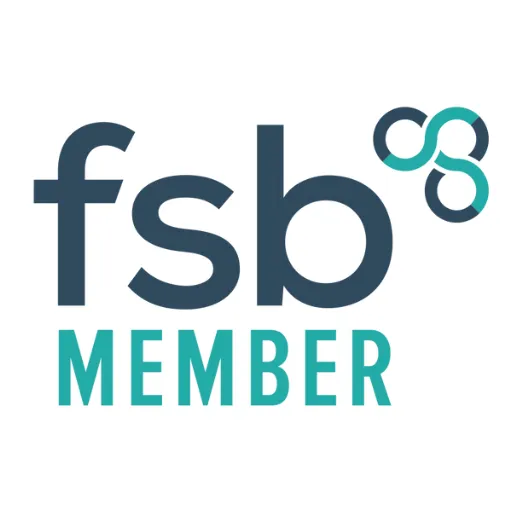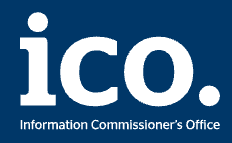Insights And Tips For Business Growth
Insights And Tips For Business Growth
Insights And Tips For Business Growth
Insights And Tips For Business Growth
Welcome to our Blog page, we not only aim to provide practical advice on business automation, efficiency, and future-ready strategies, but also reflection, thought provoking and entertaining reads. Whether you're a start-up or an established SME, our expert insights will help you streamline your systems, boost productivity, and stay ahead in a rapidly evolving marketplace.

A Guide to Competitive Analysis for Small Businesses
Competition is good, and understanding your competition is crucial for any business looking to thrive in today’s market. Competitive analysis provides insights into your competitors' strengths, weaknesses, strategies, and market positioning. This guide will walk you through the process of conducting a competitive analysis, equipping you with the tools and knowledge needed to stay ahead.
But first… Why Does Competitive Analysis Matter?
Competitive analysis is more than just spying on the competition or an overview of what other companies are doing. It helps you identify gaps in the market, understand industry trends, and discover opportunities for differentiation. By studying your competitors, you can refine your strategies, improve your services, diversify your product range, and ultimately serve your customers better. The benefits of competitive analysis include:
1. Strategic Planning: Understanding your competition helps you create informed business strategies that leverage your strengths and address market demands.
2. Market Positioning: By knowing your competitors' positions, you can better differentiate your brand and carve out a unique niche.
3. Innovation and Improvement: Learning from competitors’ successes and failures can inspire innovation and enhance your own offerings.
4. Risk Mitigation: Awareness of potential threats and market shifts allows you to proactively address risks.
How to Conduct a Competitive Analysis
Step 1. Identify Your Competitors (I know… an obvious point but stick with me here)
Start by identifying both direct and indirect competitors.
Direct competitors are those that offer similar products or services to the same target market, either in the same physical place or online. An example of these would be McDonalds and Burger King, or Starbucks and Costa. While indirect competitors provide alternative solutions that can fulfil the same customer needs such as KFC and Greggs, both provide a solution to hunger or thirst (or just a craving for a cheeky glazed donut) but sell different solutions to the same problem.
You can utilise search engines, industry reports, social media, and business directories to compile a comprehensive list of your competitors but consider the following categories:
- Primary Competitors: Businesses that offer products or services very similar to yours.
- Secondary Competitors: Providers of different products or services but cater to the same customer base.
- Tertiary Competitors: These might not compete directly but operate within the same industry or market.
Step 2. Gather Data
Collect data on your competitors’ products, pricing, marketing strategies, customer reviews, and overall market presence. This information can be found through various sources such as their websites, social media profiles, press releases, and third-party review sites. Utilise tools like SEMrush, Ahrefs, and SimilarWeb to gain in-depth insights into their online performance. When collecting data make sure it’s stored and presented in a user friendly way suitable to you; being a very visual person I like to use spreadsheets, diagrams and graphs but go with what you find easiest.
Key data points include:
- Product/Service Offerings: What products or services do they offer? How do they compare to yours in terms of features and quality?
- Pricing Structure: How do they price their products or services? Are there any discounts, bundles, or special offers?
- Marketing Strategies: What channels do they use? What type of content do they produce? How do they engage with their audience?
- Customer Feedback: What do customers say about them? Look for reviews, testimonials, and social media comments.
Step 3. Analyse Their Strengths and Weaknesses
Evaluate what your competitors are doing well and where they fall short. Look at factors such as product quality, customer service, brand reputation, and marketing effectiveness. Understanding their strengths can help you learn best practices, while identifying their weaknesses can highlight opportunities for your business to stand out.
- Strengths: What advantages do they have? This could be brand loyalty, superior product features, or a strong online presence.
- Weaknesses: Where do they lack? Identify gaps in their offerings, customer service issues, or negative feedback trends.
Step 4. Study Their Marketing Strategies
Examine your competitors’ marketing tactics, including their content strategy, social media presence, SEO efforts, and advertising campaigns. Pay attention to the channels they use, the type of content they produce, and how they engage with their audience. This analysis will help you uncover successful strategies you can adapt and areas where you can outshine them or highlight your niche. Focus on:
- Content Strategy: What type of content do they publish (blogs, videos, infographics)? How often do they update their content?
- Social Media Presence: Which platforms do they use? How do they interact with followers? What kind of engagement do they receive?
- SEO and SEM: What keywords do they target? How well do they rank in search engine results? Do they use paid search advertising?
- Advertising: What type of ads do they run? Where do they place their ads (social media, search engines, other websites, local directories, flyers)?
Step 5. Evaluate Their Customer Experience
With customers having a vast amount of choice, customer experience is a critical differentiator. Analyse how your competitors interact with their customers, handle inquiries, and manage complaints. Look at their online reviews, customer testimonials, and social media interactions to gauge overall customer satisfaction. Identifying gaps in their customer experience can provide opportunities for you to enhance your own. Examine:
- Customer Service: How responsive are they to customer inquiries? What channels do they use for customer support?
- User Experience: Is their website easy to navigate? How smooth is their purchasing process?
- Post-Purchase Engagement: Do they follow up with customers after a purchase? Do they offer loyalty programs or incentives for repeat business?
Step 6. Identify Market Opportunities
Based on your findings, identify gaps in the market that your business can fill. Look for underserved customer segments, emerging trends, or areas where competitors are underperforming. These insights can guide your product development, marketing strategies, and overall business direction. Key areas to explore are:
- Emerging Trends: Are there new trends in your industry that competitors have not yet capitalised on?
- Customer Needs: Are there specific customer needs that are not being addressed by existing products or services?
- Geographic Opportunities: Are there regions or markets that competitors have overlooked or underserved?
Step 7. Develop Your Competitive Strategy
Using the insights gained from your competitive analysis, develop a strategy that leverages your strengths and addresses your competitors' weaknesses. Focus on differentiating your brand by offering unique value propositions, superior customer service, or innovative products. Ensure your strategy is flexible enough to adapt to changing market conditions and competitor actions. Steps to consider:
- Unique Value Proposition: Clearly define what sets your business apart from competitors.
- Strategic Initiatives: Develop initiatives that target identified gaps and opportunities.
- Performance Metrics: Set measurable goals and track performance against competitors.
REMEMBER: Whilst you’re watching them, who’s watching you? Competition is healthy and good for us all, especially the end users!
Here are 5 popular tools for competitive analysis.
1. SEMrush
SEMrush is a powerful tool for analysing competitors’ SEO strategies, keyword rankings, and traffic sources. It provides detailed reports on your competitors’ online performance, helping you identify opportunities to improve your own SEO efforts.
2. Ahrefs
Ahrefs is another valuable tool for competitive analysis, offering insights into competitors’ backlinks, keyword rankings, and content performance. It allows you to track your competitors’ organic search performance and discover content gaps you can capitalise on.
3. SimilarWeb
SimilarWeb provides a comprehensive overview of competitors’ website traffic, including sources, visitor behaviour, and engagement metrics. This tool helps you understand your competitors’ online presence and identify strategies to drive more traffic to your own site.
4. BuzzSumo
BuzzSumo allows you to analyse the performance of competitors’ content across various platforms. You can see which topics resonate with their audience, identify influencers in your industry, and uncover content ideas to boost your own engagement.
5. Google Alerts
Set up Google Alerts for your competitors to stay informed about their latest news, product launches, and marketing campaigns. This free tool helps you monitor their activities in real-time and respond quickly to new developments.
Conducting a competitive analysis is essential for staying ahead in the market. By understanding your competitors’ strengths and weaknesses, you can refine your strategies, improve your offerings, and capitalise on market opportunities. By utilising the tools and steps outlined in this guide to conduct a thorough analysis, along with the MyBiz Solution platform, you can drive your business to success. Remember, competitive analysis is an ongoing process—if you are not regularly reviewing and updating your findings, your competitors will be!
I do hope you found this useful but I appreciate we are all at different stages of our business journey so for those really new to this here is a real life example:
Let's imagine you're the owner of a small, independent coffee shop located in a bustling urban area (yes, there are still towns that are thriving, not everything is on an industrial site on the outskirts). To ensure your business thrives, you need to identify both direct and indirect competitors and understand how they operate. This knowledge will help you refine your strategies and differentiate your coffee shop.
Identifying Direct Competitors
1. Other Independent Coffee Shops: Similar small businesses in your neighbourhood or city that offer handcrafted coffee, pastries, and a cozy atmosphere. Examples might include "The Cosy Coffee Corner" and "Bean & Brew."
2. Local Coffee Chains: Regional coffee chains that have a few locations in your area. They offer similar product ranges but might have a slightly different brand appeal.
3. International Coffee Chains: Well-known brands like Starbucks or Costa Coffee that have established a significant presence in your city. They offer a wide range of coffee beverages, snacks, and a recognisable brand experience.
Identifying Indirect Competitors
1. Cafés and Bakeries: Either independent or chains such as Greggs that, while not focused solely on coffee, offer it alongside their main products like cakes, pastries, and healthy meals. Customers who visit these places might be seeking a similar experience to what your coffee shop offers.
2. Fast Food Restaurants: Chains like McDonald's or Subway that serve coffee as part of their broader menu. These places attract customers looking for a quick coffee fix along with their meal.
3. Supermarkets and Convenience Stores: Places that sell ready-to-drink coffee and coffee beans. They cater to customers who prefer to grab coffee on the go or make it at home; the cold coffee fridges in Tesco’s get bigger every time I go in!
4. Online Coffee Retailers: Companies that sell premium coffee beans and subscriptions online. These appeal to coffee enthusiasts who prefer brewing their coffee at home but might occasionally visit a coffee shop.
Now let's break down the process:
1. The Cosy Coffee Corner (Direct Competitor):
- Product Offering: Handcrafted coffee, a selection of pastries, and a cosy atmosphere similar to your shop.
- Pricing: Slightly lower prices than your coffee shop.
- Marketing Strategies: Heavy use of social media and local events to attract customers.
- Customer Reviews: Generally positive, with high marks for their friendly service and community involvement.
2. Sweet Treats Bakery (Indirect Competitor):
- Product Offering: Primarily focuses on cakes but offers a decent coffee menu.
- Pricing: Competitive pricing on coffee but higher on baked goods.
- Marketing Strategies: Focuses on Instagram and Facebook to showcase their visually appealing cakes and pastries.
- Customer Reviews: Excellent reviews for their baked goods; coffee is considered decent but not the main attraction.
Conducting the Competitive Analysis
1. Collecting Data:
- Visit the competitors’ websites and social media pages to gather information on their products, prices, promotions, and customer engagement.
- Use tools like Google Alerts to stay updated on their latest news and activities.
- Visit these locations (if possible) to experience their customer service and atmosphere first-hand.
2. Analysing Strengths and Weaknesses:
- The Cosy Coffee Corner: Strengths include strong community ties and excellent customer service; weaknesses might be their limited menu options compared to your shop.
- Sweet Treats Bakery: Strengths are their visually appealing baked goods and strong social media presence; weaknesses include their less specialised coffee offerings.
3. Identifying Opportunities:
- Offer unique products that Cosy Coffee doesn’t, such as seasonal specialties or locally sourced ingredients.
- Enhance your coffee shop’s ambiance to attract customers seeking a cosy place to work or relax, something Sweet Treats Bakery might not focus on.
4. Developing a Strategy:
- Highlight the quality and uniqueness of your coffee through marketing campaigns.
- Engage with the community by hosting local events, offers or partnerships with local artists or businesses.
- Use customer feedback to continuously improve your offerings and customer experience.
By thoroughly understanding your direct and indirect competitors, you can develop strategies that leverage your strengths, address market gaps, and ultimately differentiate your coffee shop in a crowded market. This approach not only helps in attracting more customers but also ensures long-term business growth and sustainability. With My Biz Solution you can segment and tailor your marketing activities to ensure you are hitting the right audience.
For more information or have a chat please contact us.
Reviews
Photos Courtesy of LinkeIn
Testimonials Courtesy of Go High Level

Debbie DuBois
Compass Marketing Creative
"I felt completely supported as soon as I join the platform...These guys care about my business and have taken my business to the next level. The technology is continuing to shift and change while getting better and better. They are providing new services and things that I love."

Debbie DuBois
Compass Marketing Creative
"I felt completely supported as soon as I join the platform...These guys care about my business and have taken my business to the next level. The technology is continuing to shift and change while getting better and better. They are providing new services aDividernd thing that I love."

Alex Schlinsky
Founder of Prospecting On Demand™
"I have personally provided HighLevel to all of my elite clients in my mentorship program, and they have been utilizing it for prospecting, sales, fulfillment, keeping clients longer, making sure prospects never slip through the cracks, and utilizing things to save their time. If you're considering using HighLevel, use it. It's going to help your business scale!"

Shaun Kirk
PT Practice Success Marketing Creative
"The degree of service and value is phenomenal. Anything that you can think of or dream of, then a few days later you find out that it is going to be released the next week. The amount of listening they do with their customers is amazing. WHO DOES THAT? I am eternally grateful for HighLevel!"

Alex Schlinsky
Founder of Prospecting On Demand™
"I have personally provided HighLevel to all of my elite clients in my mentorship program, and they have been utilizing it for prospecting, sales, fulfillment, keeping clients longer, making sure prospects never slip through the cracks, and utilizing things to save their time. If you're considering using HighLevel, use it. It's going to help your business scale!"

Shaun Kirk
PT Practice Success Marketing Creative
"The degree of service and value is phenomenal. Anything that you can think of or dream of, then a few days later you find out that it is going to be released the next week. The amount of listening they do with their customers is amazing. WHO DOES THAT? I am eternally grateful for HighLevel!"

Christine Seale
President & CEO of NerdLevel
"It's been a complete game-changer for me. We've built our whole business around HighLevel now. We'll never go back."

Christine Seale
President & CEO of NerdLevel
"It's been a complete game-changer for me. We've built our whole business around HighLevel now. We'll never go back."
Our Focus Is Your Growth.



© 2025 My Biz Solution Ltd - All rights reserved. Terms of Service I Privacy Policy I Acceptable Use Policy I Cookie Policy
© 2025 My Biz Solution Ltd- All Rights Reserved



